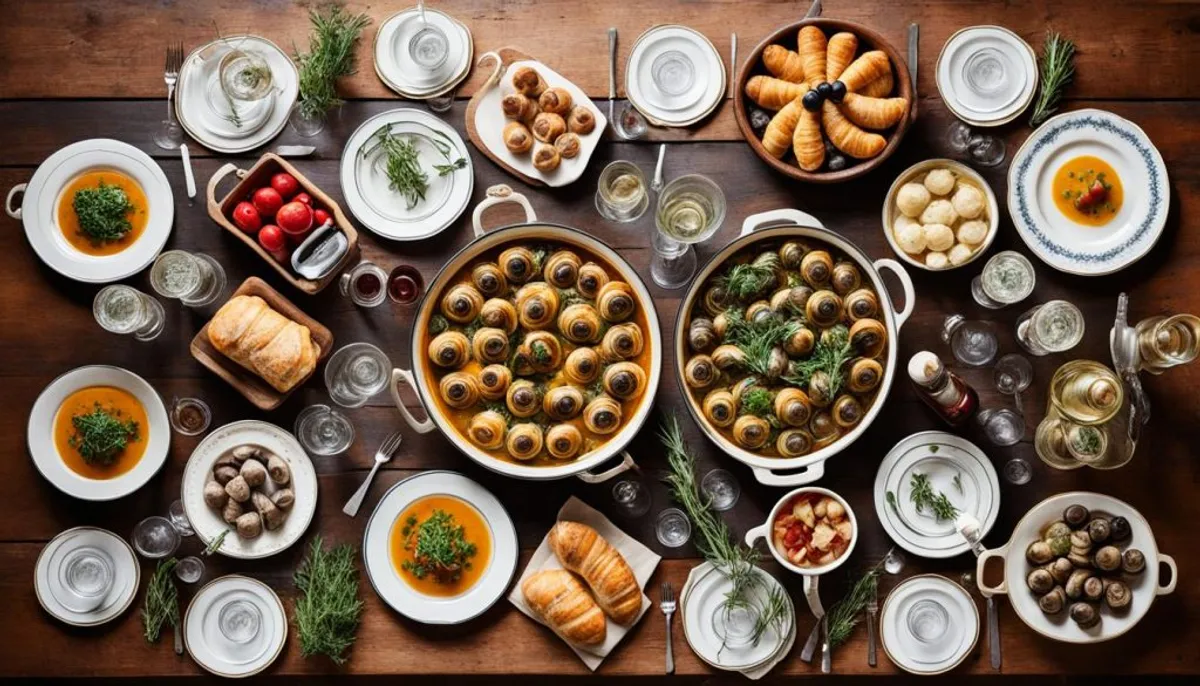France is famous for its rich culture and art of living. This cultural heritage touches many aspects of life, such as gastronomy, architecture, literature, and arts. French culture is marked by respect for traditions, elegance, refinement, freedom, and creativity.
Each region of France has its own traditions. This enriches the diversity and richness of our national heritage.

The French Historical Heritage
French culture is rich and deep, thanks to its historical heritage. The spirit of enlightenment emerged in the 18th century in France. It encouraged the quest for freedom of expression and critical thinking. Figures like Voltaire and Rousseau left a profound impact on our culture.
Iconic Castles and French Gardens
French castles and French gardens are architectural jewels. They symbolize the elegance and refinement of the era. Places like Versailles, Chambord, and the gardens of Villandry showcase the grandeur of French history.
These castles and gardens are essential to our cultural heritage. They offer visitors an immersion in the history and art of living in France.
The French Cultural Heritage
France is rich in cultural heritage. It boasts over 1,000 French museums, 44,000 historical monuments, and UNESCO sites. This offers an immersion into its history and art of living.
The Museums of France and Historical Monuments
The Louvre, Sainte-Chapelle, and the Eiffel Tower are jewels. They showcase the richness of French culture. These places are admired worldwide and allow for the discovery of an exceptional heritage, also reflecting the French cultural heritage.
The Richness of Literature and Arts
France also excels in French literature and French arts. Names like Molière, Diderot, Victor Hugo, Cézanne, and Picasso are known worldwide. They contribute to the cultural radiance of France.
| French Museums | Historical Monuments | French Literature | French Arts |
|---|---|---|---|
| Louvre | Notre-Dame Cathedral in Paris | Molière | Cézanne |
| Musée d'Orsay | Palace of Versailles | Diderot | Picasso |
| Centre Pompidou | Arc de Triomphe | Victor Hugo | Monet |
French Elegance and Traditional Decoration
French elegance and traditional French decoration are closely linked. They are especially evident in interior decoration. There is a search for balance between colors, materials, and light. French styles, such as toiles de Jouy and period furniture, showcase this taste for beauty.
French decoration is very attached to traditions. It reflects the cultural identity of the country. It highlights craftsmanship and the quality of materials.
The choice of pieces, fabrics, and period furniture demonstrates French elegance. It has a timeless charm and a subtle harmony. This aesthetic showcases the French art of living, where beauty and functionality intertwine.
| Characteristics of French Decoration | Examples |
|---|---|
| Colors and Materials | Pastel tones, velvet, brocade, lace |
| Furniture | Period furniture, dressers, wardrobes, chairs |
| Accessories | Candelabras, mirrors, vases, tapestries |
This traditional French decoration reflects an elegant and refined art of living. It is deeply rooted in the history and traditions of the country.
What is French Culture? The Art of Living à la Française
French culture is unique, centered around French gastronomy and hospitality. The meal is very important in France. It allows families and friends to gather around delicious dishes and fine wines.
Gastronomy and the Importance of the Meal
In France, French gastronomy is considered an art. The meal is a special moment. One tastes dishes prepared with care, engages in conversation, and appreciates the wines.
Each dish is a unique creation. It highlights the best products and the creativity of chefs.
The Art of Hosting and Hospitality Traditions
The art of hosting à la française is crucial. Whether for a dinner or a large reception, the French take care of everything. They pay attention to decoration and hospitality.
From homemade marshmallows to beautifully set tables, every detail matters. This creates an unforgettable experience for guests and celebrates conviviality.

French culture, with its gastronomy and traditions, is unique. It allows for gathering and celebrating around shared moments, while being recognized by UNESCO for its richness and diversity.
French Craftsmanship and Know-How
French craftsmanship is rich and passed down from generation to generation. The master candle makers of Provence and the soap makers of the Alpilles are among the many French artisans. They use ancient techniques to create French scented candles and natural French soaps. These products, marked “Made in France,” showcase the authenticity and quality of French craftsmanship.
Their existence proves the sustainability of a unique French know-how. It is a blend of creativity and French excellence. These French know-hows take pride in France. They are also sought after for their quality and innovation by consumers.
| Product | Region | Characteristics |
|---|---|---|
| French scented candles | Provence | Handmade, with natural waxes and essential oils, offering authentic scents |
| Natural French soaps | Alpilles | Made from natural ingredients, without chemical additives, for soft and healthy skin |
These products illustrate the excellence and quality of French craftsmanship and French know-how. They showcase the cultural richness of France.
French Fashion and Luxury
France is known worldwide for its French luxury and expertise in French fashion. Brands like Louis Vuitton, Hermès, Chanel, and Christian Dior are very famous. They are recognized for their excellence and timeless elegance.
French Haute Couture, an Art of Living
French haute couture represents the pursuit of perfection. The prestigious French houses maintain ancient traditions. They contribute to the reputation of the “French Touch” internationally.
| French Luxury House | Year of Creation | Iconic Know-How |
|---|---|---|
| Louis Vuitton | 1854 | Luxury leather goods |
| Hermès | 1837 | Harness making and travel goods |
| Chanel | 1909 | Haute couture and perfumery |
| Christian Dior | 1946 | Haute couture and ready-to-wear |

These prestigious French houses maintain ancient traditions. They greatly contribute to the “French Touch” around the world.
Conclusion
French culture is rich and diverse, rooted in centuries-old traditions. It ranges from historical heritage to craftsmanship know-how. The elegance of decoration and the renown of gastronomy and fashion are also key.
This refined and convivial art of living à la française attracts and inspires everywhere. It represents a quest for freedom and creativity. French culture shines on the international stage, offering everyone the chance to explore it.
France, with its iconic castles and renowned museums, showcases a rich cultural identity. Its art of living is a treasure to share. This is what attracts visitors from all over the world, eager to discover this unique culture.
RelatedRelated articles


